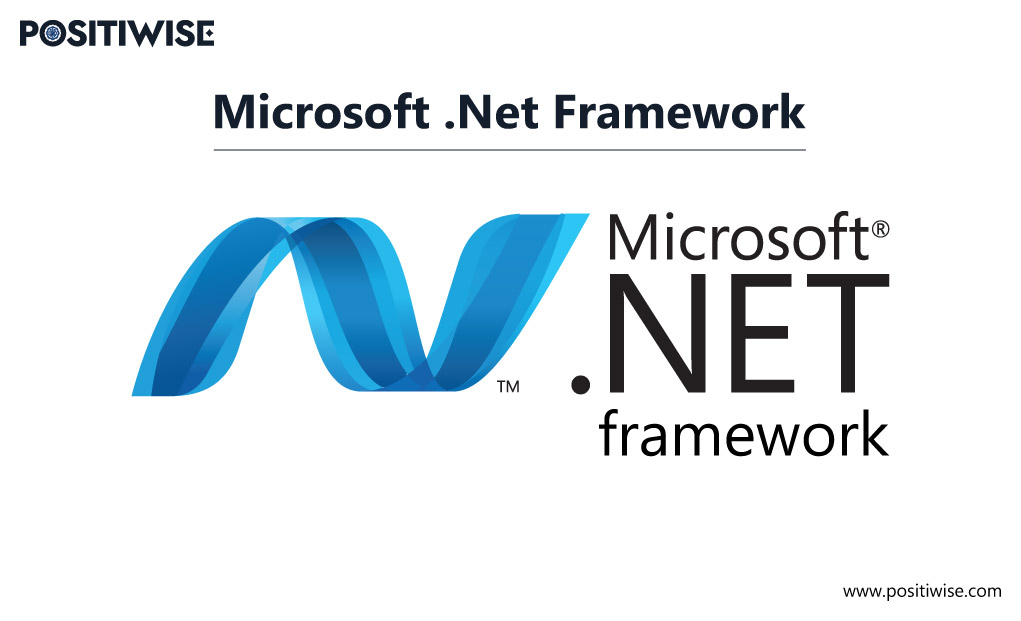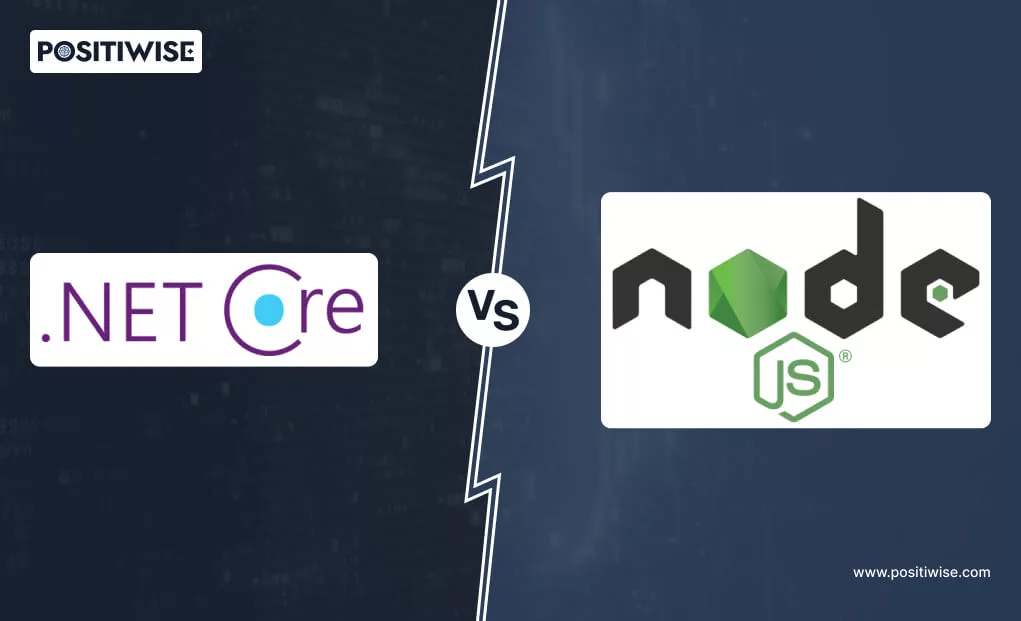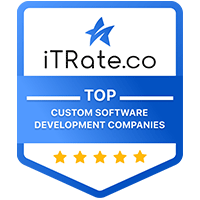Learn About the Latest .NET Framework Before You Choose It for Your Software Development
Numerous organizations provide top-quality services to their customers, but some are behind just because of outdated market strategies and weak relationships with their stakeholders. To move ahead from their peers and see their business-boosting revenue and strong connection with stakeholders, a stable and feature-rich application is a must in this era of generation.
We raise the question: How should we develop a robust enterprise solution, and which programming language, framework, and tools must we utilize? You can be quickly hassle-free from all this by contacting an IT solutions company, especially Positiwise, for covering edge-to-edge business requirements.
Developers widely prefer the .NET framework for producing robust and vigorous software, as it offers several frameworks and programming languages to choose from. Its consistent OOPS following structure, security features, multi-platform adaptability, and orderly updates make it the first choice of any software development company.
Let’s explore every crucial aspect of the latest .NET framework and determine whether it fits software development well.
What is the .NET Framework for?
Microsoft developed and introduced the Microsoft .NET framework, a platform, in 2002. The primary purpose of creating this platform was to provide a dedicated virtual environment for crafting native Windows applications. However, as technology and user necessities evolve, Microsoft has modernized its components, making the .NET framework capable of providing solutions for any operating system and device.
Due to its multi-language support feature, it aids the developers in generating code using c#, VB, C++, J#, F#, JSCRIPT, IRON RUBY, IRON PYTHON, C OMEGA, ASML, and Windows PowerShell. In addition, its modular architecture reduces errors, writes clean and readable code, and assures the development of complex front-end and backend requisites.
Developers widely choose the .NET Foundation for producing Console apps, Graphical User Interface for Windows, WPF solutions, ASP.NET, service-oriented and workflow-enabled applications, and much more. Moreover, full-stack development can be performed along with integrating cloud services from any vendor for promising seamless communication to every partner, ally, and contributor of your respective organization.
Initial working of .NET Framework
The architecture of the .NET framework includes Class Library and Common Language Runtime (CLR), and both these components work in inter-relation to process requests forwarded by end-users. In addition, developers successfully compile code for different applications using various languages without any loss in quality.
The class library packages all the predefined functions and modules necessary for executing the core operations defined in the app’s code. After completing the debugging process, the Common Language Runtime (CLR) is booted to run the business solution.
Every language undergoes a conversion of its source code into an intermediate language, which is then stored on a disk. This allows for calling and executing the code when needed. This stored file is known as an Assembly and contains information such as language type, version, and enabled security parameters.
The Assembly file is then loaded into the CLR, validating it and translating it into the binary language the machine’s processor understands. In addition to this, compilers in this framework function on Common Intermediate Language code, which aids the applications to perform procedures at runtime. It also resolves the conflicts of different versions for multi-device operability.
In simple terms, the functioning of .NET applications is based on CLR, which runs the code produced using methods in Class Library and assembled by an in-built compiler.
The Advantages .NET Web Application Framework
- Easily Expandable Solutions
- Updated Security Mechanism
- Open Source Framework
- Code Reusability
- Version Compatibility
- Interoperability
Easily Expandable Solutions
While analyzing the integration of current and upcoming tech trends, we ensure the long-lasting functioning of commercial applications. Developers and researchers around the globe provide extensive community support to .NET, constantly updating it with the latest components.
With this, your organization will be able to embed several of the latest functionalities in your single application and save the cost of developing a new app with evolving online fashion.
Updated Security Mechanisms
Every .NET software enables authentication and access control systems by default to guarantee data integrity, confidentiality, and availability. In addition, it allows only legitimate personnel to have access to the application and services offered by your company.
.NET incorporates packages that make cryptographic algorithms available for securing information transmitted between users. With this, .NET checks both the sender’s and receiver’s identities, reducing the probability of any potential cyber-attack.
Open Source Framework
The non-proprietary nature of this .NET web application framework mainly makes it more popular, as it allows developers to add custom APIs, widgets, plugins, and functions. So whether it’s a desktop, mobile, or hybrid app, any software creation is possible with it.
You can easily enhance the performance of your business software to enable fast reading and writing tasks with minimal downtime and no more glitches. You don’t always need to update it to the latest version, saving significant time and cost.
Code Reusability
For accomplishing the same milestones using different software, you can effortlessly reiterate the .NET code written for some other application. You can integrate a single function or an entire module with third-party integrations into another app. You can comfortably build an accurate program for rapidly changing business demands.
Version Compatibility
Multiple versions of your official application can be present for different users, and custom .NET development has made it possible to test them on a single computer without any fuss. This characteristic benefits programmers, enabling them to perform side-by-side execution of all the versions.
Furthermore, it helps to make essential updates for optimizing productivity and performance.
Interoperability
This platform offers services that allow developers to execute unmanaged code, including COM+, ActiveX, Windows API, COM, and C++ components. Developers are assisted by .NET in accessing low-level functions of any device based on Windows, macOS, Linux, Android, and iOS operating systems, even though this code is processed outside the Common Language Runtime.
Accelerate .NET Application Development with Our Expert Developers
Accelerate your .NET project development with our expert .NET developers. Our skilled team can efficiently build, enhance and support your .NET applications. Leverage our experience in delivering top-notch .NET solutions for enterprises worldwide.
In Conclusion
Limitless possibilities are at the fingertips of dedicated .NET developers, as this software development framework can furnish appealing interfaces and streamlined backends for any corporate solution. Also, it regularly rationalizes architecture and packages support to submerge Cloud Services, AI, ML, and Blockchain technology within the .NET web application.
Furthermore, we offer the construction of these apps within your budget and schedule. NET’s reusability, interoperability, and cross-platform compatibility attributes. Besides this, you can rely on the .NET framework to secure your data with its advanced, reliable structure. Therefore, fabricating a herculean, scalable, and sturdy business application will be a perfect choice.
Expert in Software & Web App Engineering
Parag Mehta, the CEO and Founder of Positiwise Software Pvt Ltd has extensive knowledge of the development niche. He is implementing custom strategies to craft highly-appealing and robust applications for its clients and supporting employees to grow and ace the tasks. He is a consistent learner and always provides the best-in-quality solutions, accelerating productivity.






